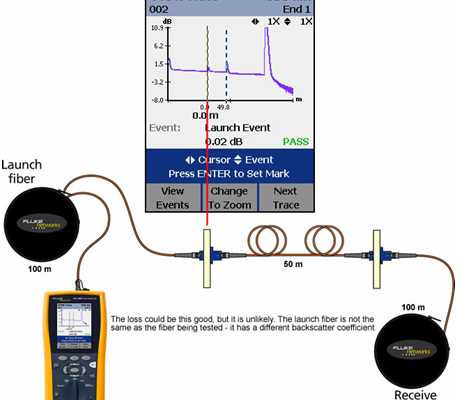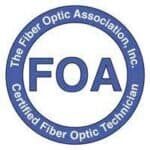Introduction:
One of the most common discussions in the ICT community nowadays is which fiber testing method should be used, and which one is more reliable? Light source with power meter (LSPM)/ Optical Loss Test Set (OLTS) or the Optical Time Domain Reflectometer (OTDR)?
With the international trends towards having higher data rates over the fibre solutions with an example of 40 /100 Gbps, along with the use of higher bit rates with coarse or dense wavelength division multiplexing (CWDM/DWDM) techniques, and the emerging Shortwave Wavelength Division Multiplexing (SWDM) used in the OM5 fibre solution to achieve greater bandwidth over longer distances, the necessity of ensuring the overall performance of the fibre cables and connectivity with lower losses is becoming more stringent taking in consideration the international trends toward lower losses.
Considering the dominance of the VCSEL light sources compared to LED sources and the narrower light beams compared to LED? , The previous will impose a special importance for the performance and quality of the fibre connectivity solution.
In the following paper, the key differences between the two testing methodologies and the key parameters are covered. Moreover, recommended testing methods and troubleshooting techniques are also provided.
The theory and standards behind Fiber testing
In order to calculate the complete link attenuation, the following formulas can be used:
Link Attenuation Allowance (dB) = Cable Attenuation Allowance (dB) + Connector
Insertion Loss Allowance (dB) + Splice Insertion Loss Allowance (dB) (1)
Where:
Cable Attenuation Allowance (dB) = Maximum Cable Attenuation Coefficient (dB/km) × Length (km)
Connector Insertion Loss Allowance (dB) = Number of Connector Pairs × Connector Loss Allowance (dB)
Splice Insertion Loss Allowance (dB) = Number of Splices × Splice Loss Allowance (dB)
NOTE – Component loss allowances are provided in ANSI/TIA-568-C.3.
Testing Types as per TIA-568-C.0:
TIA-568-C.0 provides additional recommendations for field testing. Two tiers of certification testing are specified:
Tier 1 testing: which includes overall Attenuation measurement, typically tested with a Light Source and Power Meter (LSPM) or Optical Loss Test Set (OLTS) . It also covers the Link length, determined by test equipment or from cable jacket markings, and will verify the polarity, to make sure that no 2 transmitters or 2 receivers are connected on the same physical link.
Tier 2 (OTDR testing): This is considered an optional test and it includes Tier 1 testing Optical Time Domain Reflectometer (OTDR) testing.
(Figure 1) Non accurate measurement of the launch event (Source Fluke Networks).
Figure (4) OLTS testing with Method B
The most common causes of test failures are:
(1) Contaminated connections 85% of all faults, which can be contributed to end-face contamination (Source Fluke networks )
(2) Failure to follow the connector manufacturer’s recommended termination procedures
(3) Damaged Cable
(4) Problems with the testers and jumpers themselves






